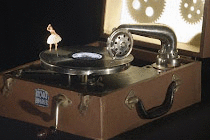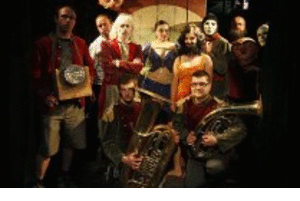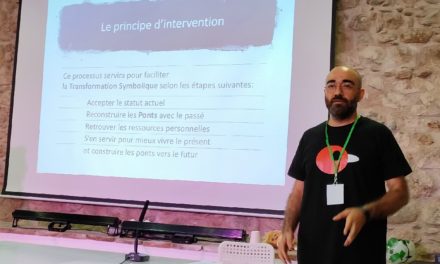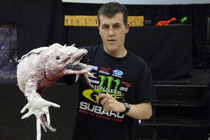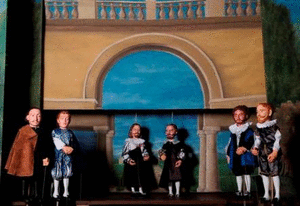We warmly thank again the publishers of Brazilian magazine Móin-Móin and the author, Mauricio Kartun, the possibility of sharing and make diffusion of this article. In the first part (click here to read it), Kartun told us how the word becomes an object, how it starts to move and, as consequence, interact. Now we explore the territory of this object, the land of the puppet, which makes possible the creation of a unique meaning. In this part we recognize the place where this creation happens, its textual shape and material.
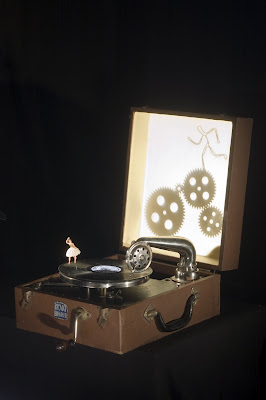
La Prophécie Mécas.
II. The poetics and dramaturgy of things(1)
What is dramaturgy?
The act of writing theatre is no more nor less than an act of imaginary improvisation with a world of dynamic fantasies, explored with all the senses. A written work is simply the recording of those same improvisations, organised as an organic and aesthetic whole. The actions: what my author’s eyes saw in a day-dream; the words: what I heard said. An improvisation in which – strangely – we work as actors and spectators at one and the same time. In other words, as Nietzsche eloquently put it: “If the work of the poet is to see a wealth of winged beings who fly about him, the work of the dramatist is, furthermore, to become them”.
Thus, the dramaturg’s work is a curious, transvestite activity in which we continually transform ourselves imaginatively into someone else. A “replacing I” of the character who experiences the scene from within his or her own body. But, pay attention: if the actor embodies the work of the traditional dramaturg – provides it with flesh and blood – the puppeteer materialises it.
When writing for puppets it is important, also, that the puppeteer-dramaturg is able to feel from the body of the puppet and is thus able to materialise in the doll his or her own emotions and sensations. The puppet dramaturg must be able to be, ubiquitously and paradoxically: matter, puppet, character, spectator and poet, all at the same time. For this reason, perhaps, the most extraordinary puppet dramaturgs have simultaneously been great master puppeteers, people accustomed to imagining with their hands, to perceive from their hands.
We can only write a script when we are capable of perceiving (in the most literal sense: “to understand something through the senses or through the intelligence assisted by the senses”) what is going to be written. There can be any kind of trigger, – a concept, an idea -, but the work doesn’t begin by being thought, – which is the typical mistake of the dramaturg or playwright who is starting out –, but from the moment in which it can be imagined: conceived within oneself with the senses, seen, heard, smelled. What is necessary is the material produced by the imagination, and the unit of that imagination is the image, whether visual, aural or of another kind.
Everything is dramaturgy
From long literary tradition, the word has acted as its medium, its natural support, but dramaturgy goes much further. Dramaturgy is not only a matter of textual questions. All that is involved in constructing an argument, a discourse up on the stage, – in the puppet theatre -, is ordered by the same laws: the sculptural and material, the sound, rhythm, light. A single text that “says” one thing under a melancholoy light takes on a different meaning in an atmosphere lit up by colours. Faced by the traditional conflict between image and word, I choose both. Both are wonderful building materials of theatrical discourse, and both can be understood and dominated with a knowledge of dramaturgy. Both also entail a risk, the risk of rhetoric: when they tell a story in the literary, narrative sense, they are usually unbearable. When the image or the word alludes and, with this allusion, propels the spectator to construct something in his or her head, that is when they become irreplaceable.
Puppet theatre, metaphor’s natural territory
At the end of a puppet show, two false puppets are consumed by flames. Puppets are actors that can be burnt. The puppet allows us to work with materials that can do things that are impossible for the actor. What is fascinating in puppet dramaturgy is the challenge of working with the unlimited nature of matter as an expressive element. When the poet puppeteer manages to make matter transcend its natural limit of silence and become eloquent, the puppet becomes irreplaceable.
A student presents an exercise: a puppet made of ice is in love with a burning candle. Trying to make her fall in love he melts at her side. What could better represent the man in love, apparently cold, hard, and yet nevertheless falling apart beside the woman he adores? Finally, the water from the melting puppet put out the candle and thus brought the exercise and his love to an end. The character didn’t need to say “I’m melting for you”, nor explain the pardox of extinguishing the loved one with his passion, he simply made a metaphor of it all in the most eloquent manner.
Another pupil presents her exercise: a puppet made from a paper napkin, a very absorbent material, on the edge of a glass of water. The puppet: a man who doubted and doubted about everything. As the monologue progressed the puppet put first one foot in the water, then the other, then he sank slowly and came apart. The last thing left was the puppet’s head, doubting still, his body a formless mass in the water. The character never needed to be so ingenuous as to say “I’m drowning in a glass of water”. Matter understood as material for poetic crafting can be richer than any word. The puppet is the natural territory for metaphor. You just need puppeteers who accept they are poets and renounce the mere role of illustrator.
The happy coupling of text and staging
Traditional dramatic creation, that which originates in a previously written text, requires, like any organic making, a coupling, a crossing of two different things. The miracle of dramatic creation is like that of creating life: it demands that two couple in order for conception to occur. The text and the staging mate and from here theatrical creation results, the birth of their child being the show. And here, at the time of birth, strong points and defects will be tried and tested.
The miracle of dramaturgy is this power to become flesh, to be embodied, to pass into the flesh of the actor, and it is exactly this human body which gives the measure of the text. A text is an emotion of the right size for its instrument, that particular body. In the same way, a puppet that gives form to a text also takes on the right size for it, and creates, like any instrument, it’s own demands. This is why it is so difficult to stage conventional theatre texts with puppets. The puppet is an instrument that cries out for specific scripts, made to measure. The extraordinary thing about puppets is their versatility that enables them to do things actors never could. To convert them into miniature actors is to underestimate them. For this reason there is an urgent necessity for a quantity of new texts to give music, voice, to so much silent material.
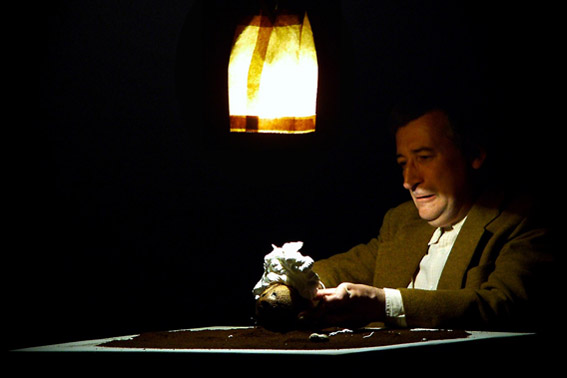
Carles Cañellas. Photo by Jesús M. Atienza.
Myhos and Logos
All human activity takes place in one or other of its mythical fields: Logos, knowing, know-how, knowledge; and Mythos, imagination, imagination’s fantasy. Our society has undertaken particularly to value the activities of logos, because it is on them that nothing less than production – its undeclinable objective – depends; and to underestimate those of mythos, of the magical world. Artists have found a curious kind of path to salvation: that of practising an activity which allows us as adults to continue playing like children, exercising as a serious thing joyous, playful activity; for nothing other than that. play, is the activity of the imaginary.
The artist’s function has always been to break the limits of any concept, to extend the boundaries beyond the four walls in which custom, norms, cannons enclose us; and to propose constantly the possibility of the existence of life beyond logos. Just as there are forest or fauna reserves, artistic activity is nothing less than a reserve on earth for the imagination. A society without artists is a society enclosed by walls, unable to create anything new. In every civilisation, the presence of the artist has been the prow that has allowed that sea of conceptual ice which keeps it locked in to be broken. We guarantee for civilisation the institutionalised presence of fantasy. We have this basic function in society and, from this awareness, it is absolutely essential to reclaim our place. Often, the state does not know what to do with artists, how to classify them, where to put them, and the easiest thing to do is to throw them into the drawer of those things that are incomprehensible, superfluous, or merely decorative.
The puppet, eloquent part of a whole
A hundred head of cattle we say, and when we do we aren’t thinking about the animal’s head but about its whole body. We have used what in rhetoric is called synecdoche. The part for the whole, a word or an expression which, when used, alludes and refers to a much larger entity than itself, of which it forms a part. In its apparent debility in the face of other arts, puppets actually have an enormous hidden power which is precisely what gives them their synecdochic character, their capacity to represent, through a single part, a wonderful whole that has taken shape in the spectators’s mind. On the small stage a rabbit digs earth – the imaginary ground – to make its warren. The earth, naturally enough, isn’t there, but through manipulation, through animation, through movement and sound provided by the puppeteer, the audience creates a big imaginary hole – down which the rabbit disapears. Nothing represents the hole physically, but when the hunter appears the children laugh, anticipating the moment he’ll fall down it. And fall he does. When a child enters, the rabbit’s friend, the smallest members of the audience alert him to the risk of an imminent drop. A gesture made by the puppet has created illusion by allusion. And the illusion is so vivid, so palpable, that the best hole we could possibly make as part of the set with technical means, would be poor compared to the realistic effect of this other one. In this field there’s no beating the puppet. We can make it rain on stage using technical means: yet in a few seconds the members of the audience are trying to work out where the water is coming from, and where it runs away. On the other hand it’s enough that an actor comes on stage soaking wet, shaking his umbrella, for the synecdochic illusion of rain to make the audience accept with absolute credulity that off-stage there’s a rainstorm. The miracle of the theatre, and particularly of puppet theatre, the guarantee of its survival, lies in its ability to allude to an action, a story, which in reality takes place in the minds of the viewers, obliging them to practice that enormously enjoyable mental activity of imagining. Like the small, visible part of an iceberg – the work – which refers, alludes to, and constructs in the imagination, a much larger totality, which is the argument and meaning of the play.
Translated from Spanish by Rebecca Simpson.
Note:
(1) Unconnected fragments of transcripts of classes from the first National Puppetry Dramaturgy Workshop (I Taller Nacional de Dramaturgia para Títeres). Bogotá. 1999. Published in the Magazine Fardón. Año 4 – N°15.January2000.

